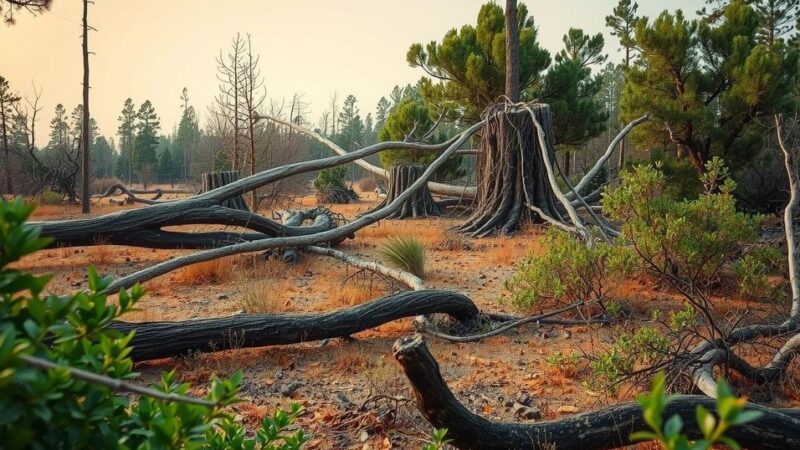Farmers in Bolivia face a challenging choice after last year’s devastating wildfires: continue land clearing via burning or switch to tree planting to address worsening droughts. Approximately 10.7 million hectares of forest burned, resulting in loss of life and high carbon emissions, thus raising significant concerns about land management and environmental sustainability.
In Bolivia, farmers face a pivotal decision in the wake of the most devastating wildfires in the nation’s history. Less than a year after vast areas of land burned, they must choose between continuing the practice of igniting fires to clear agricultural land or adopting tree planting as a strategy to combat increasing drought conditions. This dilemma arises amidst concerns for both the environment and agricultural viability.
The Bolivian Institute for Forest Research (IBIF) reported that approximately 10.7 million hectares, an area comparable to Portugal, of dry tropical forest was destroyed in Bolivia’s eastern lowlands within the last year. The scale of the destruction far exceeded expectations and has prompted urgent discussions surrounding sustainable land management practices. Despite being overshadowed by similar events in Brazil, the fires led to significant loss of life and environmental degradation.
The impact of these wildfires was severe, resulting in the loss of at least four lives and generating unprecedented levels of carbon emissions, as reported by the European Union’s climate monitoring agency. The dire situation not only threatens biodiversity but also jeopardizes the livelihoods of many farmers who depend on the land for sustenance. The dilemma represents a broader global challenge of balancing agricultural demands with environmental stewardship.
In conclusion, Bolivian farmers are confronted with a critical decision post-wildfires: to burn land further for agriculture or to engage in tree planting efforts to alleviate drought impacts. The extensive destruction of forests raises significant concerns regarding environmental health and agricultural sustainability, highlighting the urgent need for a balance between land use practices and ecological conservation. The fate of their agricultural future may depend on the decisions made in this pivotal moment.
Original Source: www.ashleycountyledger.com






